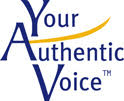
Photo courtesy of Pixabay user Unsplash
I like meetings. They’re great . . . when they’re great. Clearly, I think in-person communication is invaluable. There are some things you just can’t get done by email, or text or even a phone call. You need to be in the room, with the other folks involved, planning, brainstorming and problem solving together. In fact, my mantra for meetings is, “Let’s create something wonderful . . . together!”
But, let’s face it, not all meetings are created equal. And, to be fair, very few of us have been “trained” in how to run a good meeting, or participate in one for that matter. It’s just all supposed to happen by itself. The fact that meetings get bogged down and don’t produce what they’re intended to produce doesn’t seem like that big a deal (unless you calculate in the frustration), until you apply the numbers.
The Harvard Business Review developed a useful calculator to indicate what a meeting might actually cost an organization. For instance, if you hold a meeting with five people and that meeting lasts 30 minutes, and each of those people earns a salary of $60,000, that meeting would cost $105. For 10 people earning $80,000, it would cost $560. For 30 people earning $50,000, we’re talking $1,015. Did the meeting produce enough results or revenue to justify that?
But it’s not just the bottom line. It’s the way meetings impact our passion for the work, and our ability to work together.
I’ll never forget sitting in on a meeting of elected officials who were supposed to be listening to the concerns of the citizenry. Now, I know this is not your regular organizational meeting, but I mention this because it was the epitome of a painful meeting. One citizen after another stood before this group with their concerns, only to be met with the absolutely useless power-positioning comments of not one, but several of the officials. Absolutely no relevant information was delivered. This went on for hours. I had to be there to fulfill a commitment but could not wait to get out of there. After awhile, I literally thought I was going to implode, or explode!
What impact do you think that meeting had on the people in attendance? What can we learn from it?
1. Clearly, the meeting was serving the officials, not the citizens. Even though they published an agenda to address certain topics, this meeting was really a platform for the officials.
What to do instead? Focus on meeting the needs of your participants. Query them ahead of time. What do they need to take their next steps? What problems are they encountering? What do they want to walk out of the meeting with? Create your agenda to address the specific needs of your team.
2. By the way this meeting was run, it seemed to me none of these people had a life. Literally, we were there for hours. Each one of them felt the need to chime in on every question, not really contributing anything, and not searching for information. They didn’t ask questions to learn more. They used it as their pulpit.
What to do instead? Use the agenda you’ve created, based on the needs of your group members. Invite each team member to give their update and/or present their most pressing need, within a specific amount of time, then ask the rest of the group for suggestions and helpful resources to meet the specific request of that team member. Encourage the team to ask questions. Once the time is up, move on to the next person. If a situation needs more attention, they can take it offline. Doing this, every team member that requests time is heard and receives what they need.
3. One of the toughest things about that “officials” meeting was the lack of camaraderie, or caring, or fun. It was as dry as toast, and no one seemed to be engaged. Addressing the emotional needs of your team is critical. This is often ignored because we don’t think it’s “businesslike,” but that couldn’t be further from the truth. Most of the challenges that emerge are emotional! Ever had someone get angry in a meeting? Or offended? Or hurt?
What to do instead? Bring in the fun. Start with a little chit chat. Give people some time to settle in — even five minutes helps. We are human. Getting to know each other and catch up is essential because these small moments bond us and help us to learn to trust each other. We have to trust each other to reach good decisions together. Then, when challenges do emerge, we have some goodwill to soften the impact.
These three tips will help you immensely. There’s so much more you can do to create the kind of results you want from your meetings. It just takes a little time, focus and open-heartedness. I’d love to help! You can reach me at Andrea@AndreaBeaulieu.com.

Leave A Comment